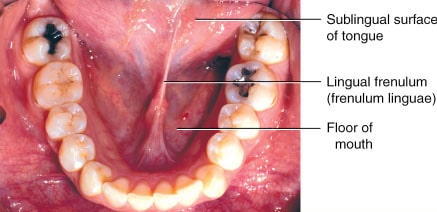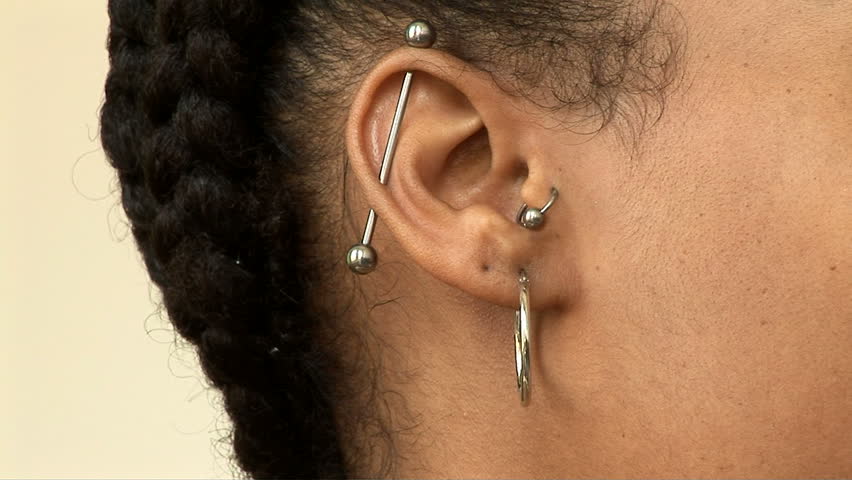Contents:
- Medical Video: Top 3 Proven Speech Therapy Tips When Your Child's Speech is Unclear Part 2
- What is that tongue tie?
- What causestongue tie?
- What are the characteristicstongue tie?
- What is the impact if your child hastongue tie?
- Tongue tie can cause difficulty speaking to children
- How to overcome and curetongue tie?
- When tongue tiemust be operated on?
Medical Video: Top 3 Proven Speech Therapy Tips When Your Child's Speech is Unclear Part 2
Tongue is an organ that has an important role in the process of chewing and talking. Therefore, if the child has a disorder or abnormality in the tongue, his ability to speak can also be affected. One condition that causes this istongue tie, or ankyloglosia.
What is that tongue tie?
Tongue tie is a congenital disorder characterized by a short lingua frenulum on the tongue, which causes limited tongue movements.
What is Linguae Frenulum? Frenulum linguae is a mucous fold of membrane that extends from the bottom of the mouth and is connected to the middle of the lower part of the tongue.
At birth, the tongue is generally of short size, and the frenulum is located at the tip of the tongue. Then, in the first weeks of life, the tongue will grow longer and thinner, then the position of the frenulum will slowly retreat to the back of the tongue. However, if it happens tongue tiethe frenulum will remain at the tip of the tongue, accompanied by the attachment of the frenulum, resulting in impaired movement of the tongue.
The condition that has the medical name ankyloglossia is more common in infants compared to adolescents and adults. This is becausetongue tie lightness generally can "heal" itself as it grows. It is estimated, the short frenulum can elongate spontaneously because of strain and thinning, along with age and the use of the tongue to speak.
What causestongue tie?
Cause tongue tie still unclear. There are several syndromes that cause emergence tongue tie, among others: X-linked cleft palate (a type of cleft lip), Kindler syndrome, van der Woude syndrome, Opitz syndrome. However, most of it tongue tie found in people without congenital abnormalities or other diseases. In addition, there is also a genetic component that causes it to occur tongue tie.
What are the characteristicstongue tie?
Tongue experiencing tongue tie will have a thick or thin frenulum, and have a membrane. The tongue size is abnormally short, and there is attachment to the tip of the tongue or close to the tip of the tongue. The tongue may have a hollow or heart shaped when sticking out. The tongue is often difficult to stretch, even fails to reach the lower lip.
Tongue tie also causes difficulty in sticking the tip of the tongue into the teeth and upper lip. If it is severe enough, even your little one may not be able to lift your tongue at all. Or if they can lift the tip of the tongue, usually there will be a mortar behind the tip of the tongue. Tongue tie also causes tongue movement to the right or left side to be disturbed.
What is the impact if your child hastongue tie?
Tongue tie can cause difficulties when mothers give breast milk to their babies, so babies will tend to stop breastfeeding in the first week of their lives. other than that tongue tie can also make the mother's nipples become easily injured, because the mother's nipple will be a lot depressed with the baby's gums, and the baby has difficulty sucking it.
Tongue tie also has the potential to create physical and social problems. Physical problems that often occur such as difficulty licking lips, cleaning teeth from leftovers, and discomfort. Other problems related to limited tongue movements include a decreased ability to play inflatable instruments and difficulty licking ice cream. This symptom is usually accompanied by shame because of getting ridicule from peers.
Tongue tie can cause difficulty speaking to children
Tongue tie can cause speech disorders in some children, but it will not interfere or slow down when the child starts talking.
This disorder usually occurs in the alias articulation, for example in the letters "T", "D", "L", "R", and "S" which require the movement of the tip of the tongue touching the palate. This is because your child will find it difficult to lift the tongue to reach that part.
When your child will say the letter "r", where there is a need for vibrations on the tongue, especially on the front and requires the free tip of the tongue, the little one will experience difficulties. So, to compensate for this, the lower jaw of the little one is often raised to reduce the limitations of tongue movement.
How to overcome and curetongue tie?
There are alternatives to surgery that can be done when your child experiencestongue tie, namely observation and speech therapy. The observation approach is carried out on infants with mild symptoms, because the possibility of the child will overcome the limitations of the movement of the tongue themselves as he gets older.
In children who have difficulty speaking due to tongue tiespeech therapy can help correct articulation errors. One of the disadvantages of speech therapy is that it takes more time so that the child will be aware of the interference he has.
Speech therapy that can be done is articulation therapy to help produce sound and teach how to recite letters. The therapist will improve if the child is wrong in reciting it. The therapist will also ask your child to pronounce letters in the form of words and sentences, and teach the child how to say the correct one.
When tongue tiemust be operated on?
Sometimes, tongue tie must be repaired as soon as possible through the operation, especially if:
- this condition causes your child to have difficulty breastfeeding
- brought to school age and caused articulation problems
- children experience negative psychological effects due to reproach by their friends
Frenotomy (frenum cutting) or frenectomy (cutting and removal of frenulum) is recommended if the child has difficulty speaking accompanied by difficulty breastfeeding.













